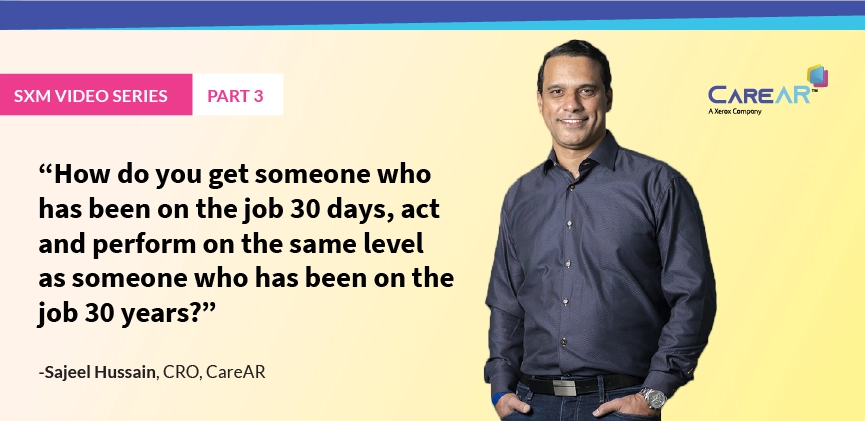I recently spoke at the Augmented World Expo (AWE) in Santa Clara, California, where I shared what CareAR’s Service Experience Management (SXM) platform includes. It consists of three packaged applications, which I believe will create amazing self-solve, proactive, predictive experiences for your organization. They will also help your organization save money. Here is a flavor of what each application includes:
- CareAR® Assist provides remote assistance through an expert who can be located anywhere. Sessions use live video with annotations, they can be multi-party, and are accessible on all kinds of devices, including wearables and drones.
- CareAR® Instruct provides self-guided instructions. For example, I can go to an MRI machine, scan the QR code, and receive self-solve, step-by-step directions to fix issues. CareAR Instruct also lets you convert paper manuals into digital documents.
- CareAR® Insight goes hand-in-hand with CareAR Instruct to provide immediate contextual intelligence, such as real-time data fed via IoT or other digital sources to help you predict potential problems that can be addressed proactively.
These applications have fundamental use cases that we know will help drive business outcomes for enterprises. We see them every day. The top four include:
- Service desk: Something happens in the field, you call the service desk, the agent provides a link, you click on the link to join the agent on an AR call, and you resolve the issue without a truck roll.
- Dispatch: In some cases, a field tech has to be dispatched to change a part. The tech can leverage tools like AR to optimize support.
- Smart assets: This is about creating smart assets using CareAR Instruct. Creating AR-ready devices, such as AR-ready printers and AR-ready engines.
- Training and upskilling: Companies can reduce the skills gap through simulative and situational training, using features such as digital twins, hotspots, and parts detection. The analogy that we use is getting a field tech who’s been on the job for 30 days to perform at the same level as a technician with 30 years of experience.
Here are a few industries where these use cases can be applied:
- Manufacturing to reduce downtime and scrap
- Telecom to reduce truck rolls or to leverage drones to see cell phone towers
- IT services to leverage wearables for hands-free assistance
- Health care to repair and maintain medical devices, such as MRI and CRT machines
- Financial services to repair and maintain point of sales systems and ATMs
- Insurance to optimize workflows and claims processing
- Restaurants to repair ovens
- Aerospace and military to transfer knowledge and repair and maintain airplanes
I believe these applications will help companies save money by reducing the number of calls to the service desk, decreasing truck rolls, optimizing field support when a technician needs to be dispatched, and getting new employees up to speed quickly.
Note: this is the third part of a three-part series taken from Sajeel’s recent AWE Enterprise Breakout presentation. If you haven’t already, check out the full series:
